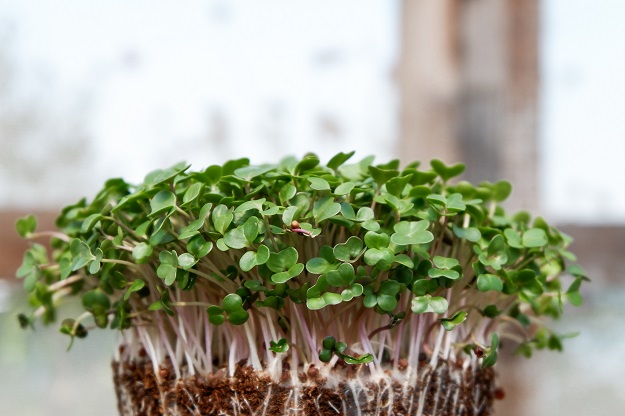
Spring has officially come, and warmer weather is starting to happen. For traditional gardeners, if you haven’t started to prep seeds and begin early growth, the clock is ticking so now is the time to start. For year-round greenhouse growers, well, it’s still business as usual. For those of you who crave the consistency of climate-controlled growing, we’ve put together a quick selection of vegetables, herbs, and microgreens that are good to grow whenever you’re good to go.
Microgreens
You’ve probably seen microgreens before. Also known as vegetable confetti, microgreens are the small, leafy garnishes modern chefs like to pack onto their plates. Microgreens are plants that are harvested before they are fully grown, typically just after the plant develops its first leaves. Depending on what seedling you’re using, microgreens are harvested anywhere between 2 and 3 weeks after germination. Cruciferous vegetables, such as broccoli, cauliflower, and arugula, are popular choices for beginner microgreen growers, but any vegetable or herb can be turned into a microgreen. Microgreens are dense in nutrients and taste, and in modern cuisine, they tend to act as flavor enhancers or enrichers. Spice up a salad with garlic and yellow beet microgreens or add some wheatgrass microgreens to a smoothie. If you don’t like the taste, no worries. You’ve only invested two or three weeks into growing.
Herbs
Continuing the theme of garnishes and flavor enhancers, herbs find a comfortable spot in year-round greenhouses. If you’re interested in growing herbs, keep the soil moist but never overwater. It’s also best practice to ensure that proper airflow is maintained. Fungal infections and various pests also love the moist soil that most herbs crave. When it comes to growing herbs, basil, parsley, and dill are all classics, but mint, a plant notorious for its ability to spread and consume a raised bed garden, thrives in a greenhouse due to the greenhouse’s segmented nature. If you are just starting out, try rosemary. It’s recommended to start from a cutting rather than a seed, but beyond that, just keep the greenhouse heated and you’ll find yourself well on the way to a successful seasoning.
Vegetables
We get it. For many hobby growers, they invested in a greenhouse because they wanted fresh produce available year-round. With a climate-controlled greenhouse, forget about worrying about the quality of food at your local grocer. No more turning around bell peppers to confirm that their back isn’t bruised. No more squeeze-testing tomatoes to ensure that the insides aren’t mushy. Eggplants that are grown in your own greenhouse taste leagues better than whatever you can buy off the grocery store shelf. I’ll give special attention to growing lettuce in a greenhouse, which has a much fuller texture than the stuff you buy in bags. It’s a perfect beginner plant, and it can be started in the winter without a fully climate-controlled greenhouse as long as you can provide it with direct sunlight.
Lettuce thrives at temperatures between 50- and 70-degrees Fahrenheit but is remarkably hardy and will tolerate warmer and colder temperatures, though it does not enjoy hot temperatures. Hot temperatures cause the lettuce plant to bolt. Bolting is when the lettuce plant’s survival instincts kick in, causing the plant to utilize nutrients to produce seeds, not crisp leaves. The result of bolted lettuce? A bitter salad. If you’re new to growing lettuce and are worried about potential bolting, a quick Google search will turn up several strains of bolt-resistant and heat-resistant lettuce.
Background information for this article was provided by Arcadia GlassHouse. You may visit their website at ArcadiaGlasshouse.com.
Related Articles & Free Email Newsletter
How to Get Started with Organic Gardening in a Greenhouse




Comment here